Леонид Вишняцкий - Вооруженное насилие в палеолите
- Название:Вооруженное насилие в палеолите
- Автор:
- Жанр:
- Издательство:Stratum plus.
- Год:неизвестен
- ISBN:нет данных
- Рейтинг:
- Избранное:Добавить в избранное
-
Отзывы:
-
Ваша оценка:
Леонид Вишняцкий - Вооруженное насилие в палеолите краткое содержание
Статья посвящена вопросу о существовании и интенсивности вооруженного насилия на разных стадиях палеолита. В первых двух разделах даны обзор и анализ палеоантропологических и изобразительных данных, имеющих отношение к этой теме. В третьем разделе рассматривается проблема оценки изменений в интенсивности вооруженного насилия по ископаемым материалам. Собраны и представлены (табл. 1 и 2) все доступные сведения о находках на памятниках палеолита и мезолита костей людей и животных с застрявшими в них фрагментами каменных или костяных наконечников. Показано, что все находки такого рода возрастом старше 15 тыс. лет — это кости животных (10 костей 10 особей с 9 памятников). Напротив, после 15 тыс. лет соотношение резко меняется, и число находок человеческих костей с вонзившимися в них обломками оружия (29 костей 27 индивидов с 17 памятников) почти сравнивается с числом аналогичных находок костей животных. Учитывая, что количество раскопанных фаунистических остатков на несколько порядков превышает количество антропологических находок, такое равенство может свидетельствовать о важных изменениях в динамике вооруженного насилия (и жизни общества в целом) в конце палеолита.
Вооруженное насилие в палеолите - читать онлайн бесплатно полную версию (весь текст целиком)
Интервал:
Закладка:
Guthrie R. D. 2005. The Nature of Paleolithic Art. Chicago: The University of Chicago Press.
Henry-Gambier D. 2005. Evolution des pratiques funeraires en Italie au Paleolithique superieur. In: Vialou D., Renault-Mikosky J., Pathou-Mathis M. (eds.). Com- portements des hommes du Paleolithique moyen et superieur en Europe: territoires et milieux. Liege: ERAUL 111, 213—29.
Henry-Gambier D. 2008. Comportement de populations d'Europe au Gravettien: pratiques funeraires et interpretations. Paleo 20, 165–204.
Hernandez Perez et al. 1995: Hernandez Perez M. S., Mar- set P. F. I., Ferrer E. C. 1995. Arte rupestre en Alicante. Alicante: Fundacion Banco Exterior.
Jackes M. K. 2004. Osteological evidence for Mesolithic and Neolithic violence: Problems of interpretation. In: Roksandic M. (ed.). Violent Interactions in the Mesolithic: Evidence and Meaning. BAR IS 1237. Oxford: Archaeopress, 23–39.
Judd M. 2004. News from the British Museum. British Association for Biological Anthropology and Osteoar- chaeology Annual Review 5, 5.
Klaatsch H. 1920. Der Werdegang der Menschheit und die Entstehung der Kultur. Berlin: Deutsches Verlags- haus Bong und Co.
Klima B. 1988. A triple burial from the Upper Paleolithic of Dolni Vestonice, Czechoslovakia. JHE 16, 831–835.
Koslowski S. K., Sachse-Koslowska E. 1993. Maszycka Cave: a Magdalenian site in Southern Poland. Jahrbuch der Romisch-Germanischen Zentralmuse- ums 40, 115–205.
LeBlanc S. 2010. Early Neolithic warfare in the Near East and its broader implications. Neo-Lithics (1), 40–49.
Leroi-Gourhan A. 1968. The art of prehistoric man in Western Europe. London: Thames & Hudson.
Letourneux C., Petillon J.-M. 2008. Hunting lesions caused by osseous projectile points: experimental results and archaeological implications. JAS 35, 2849–2862.
Lopez-Montalvo E. 2011. Violence et mort dans Part rupes- tre du Levant: groupes humains et territoire. Dans: Baray L., Honegger M., Dias-Meirinho M. H. (dir.). L’armement et l’image du guerrier dans les socie- tes anciennes: de l’objet a la tombe. Dijon: Editions universitaires de Dijon, 19–42.
Martin H. 1907. Recherches sur revolution du Mousterien dans le gisement de la Quina. Tome 1. Paris: Schleicher.
Martin H. 1934. Pathologie osseuse prehistorique. Bles- sure par arme de jet sur une vertebre de renne. Compte-rendu de la 58e session de l’Association franqaise pour l’avancement des sciences. Rabat, 183–184.
McCown T. D., Keith A. 1939. The Stone Age of Mount Carmel. Vol. 2. The Fossil Human Remains from the Levalloiso-Mousterian. Oxford: Clarendon.
Mezzena F. 1976. Nuova interpretazione delle incisioni pa- rietali paleolitiche della Grotta Addaura a Palermo. Rivista di scienze preistoriche 31, 61–85.
Monk S. J. 1997. Conflict and competition in Spanish prehistory: the role of warfare in societal development from the late fourth to third millennium BC. Journal of Mediterranean Archaeology 10 (1), 3—32.
Morel P. 1998. La grotte du Bichon (La Chaux-de-Fonds, canton de Neuchatel, Suisse). Dans: Les derniers chasseurs-cueilleurs du massif jurassien et de ses marges. Lons-le-Saunier: Centre jurassien du patri- moine, 88–93.
Munzel S. C., Conard N. J. 2004. Cave bear hunting in the Hohle Fels, a cave site in the Ach Valley, Swabian Jura. Revue de Paleobiologie 23 (2): x-xx.
Napierala et al. 2010: Napierala H., Honeisen M., Traut- mann M. 2010. «Stirb an einem anderen Tag» — Schussverletzung eines Rentiers vom Magdale- nienfundplatz Kesslerloch bei Thayngen (Kt. Schaffhausen). Archaologisches Korrespondenz- blatt 40, 457–466.
Nash J. 2005. Assessing rank and warfare-strategy in prehistoric hunter-gatherer society: a study of representational warrior figures in rock-art from the Spanish Levant, southeastern Spain. In: Pearson M. P., Thorpe I. J. N. (eds.). Warfare, Violence and Slavery in Prehistory. Proceedings of a Prehistoric Society Conference at Sheffield University. (BAR IS 1374). Oxford: Archaeopress, 75–87.
Nikolskiy P., Pitulko V. 2013. Evidence from the Yana Palaeolithic site, Arctic Siberia, yields clues to the riddle of mammoth hunting. JAS 40, 4189–4197.
Noe-Nygaard N. 1974. Mesolithic hunting in Denmark illustrated by bone injuries caused by human weapons. JAS 1, 217–248.
Noe-Nygaard et al. 2007: Noe-Nygaard N., Milan J., Hede M. U., Holm J. 2007. A reindeer track from a drill core, and lake basin development of the Late Glacial Lille Slotseng kettle-hole basin, South-East Jylland, Denmark. Bulletin of the Geological Society of Denmark 55, 85–95.
Orschiedt J. 2008. Der Fall Krapina — neue Ergebnisse zur Frage van Kannibalismus beim Neandertaler. Quarter 55, 63–81.
Petillon J.-M., Letourneax C. 2003. Au retour de la chasse… Observations experimentales concernant les impacts sur le gibier, la recuperation et la maintenance des projectiles dans le Magdalenien superieur d'Isturitz (Pyrenees-Atlantiques). Prehistoire Anthropologie
Mediterraneennes 12, 173–188.
Pettitt P. 2011. The Palaeolithic Origins of Human Burial. London; New York: Routledge.
Robb J. 2007. The Early Mediterranean Village. Agency, Material Culture, and Social Change in Neolithic Italy. Cambridge: Cambridge University Press.
Robbins L. H., Lynch B. M. 1978. New evidence on the use of microliths from the Lake Turkana Basin, East Africa. CAn 19, 619–620.
Roksandic M. 2004. Contextualizing the evidence of violent death in the Mesolithic: burials associated with victims of violence in the Iron Gates Gorge. In: Roksan- dic M. (ed.). Evidence and Meaning of Violent Interactions in Mesolithic Europe. (BAR IS 1237). Oxford: Archaeopress, 53–74.
Roksandic M. 2006. Violence in the Mesolithic. Documenta Praehistorica 33, 165–182.
Roksandic et al. 2006: Roksandic M., Djuric M., Ra- kocevic Z., Seguin K. 2006. Interpersonal violence at Lepenski Vir Mesolithic/Neolithic complex of the Iron Gates Gorge (Serbia-Romania). AJPA 129, 339–348.
Roper M. K. 1969. A survey of the evidence for intrahuman killing in the Pleistocene. CAn 10, 427—59.
Rosas et al. 2006: Rosas A., Martinez-Maza C., Bas- tir M., Garcia-Tabernero A., Lalueza-Fox C., Hu- guet R., Ortiz J. E., Julia R., Soler V., Torres T. de, Martinez E., Canaveras J. C., Sanchez-Moral S., Cuezva S., Lario J., Santamaria D., Rasilla M. de la, Fortea J. 2006. Paleobiology and comparative morphology of a late Neandertal sample from El Sidron, Asturias, Spain. PNAS 103, 19266—19271.
Ruiz et al. 2006: Ruiz J. F., Mas M., Hernanz A., Rowe M. W., Steelman K. L., Gavira J. M. 2006. First radiocarbon dating of oxalate crusts over Spanish prehistoric rock art. International Newsletter on Rock Art 46, 1–5.
Schulting R. J., Fibiger L. (eds.). 2012. Sticks, Stones, and Broken Bones. Neolithic Violence in a European Perspective. Oxford: Oxford University Press.
Shang H., Trinkaus E. 2008. An ectocranial lesion on the Middle Pleistocene human cranium from Hulu Cave, Nanjing, China. AJPA 135, 431–437.
Sharma G. R. 1973. Mesolithic lake cultures in the Gan- ga valley, India. PPS 39, 129–146.
Smith et al. 2007: Smith M. J., Brickley M. B., Leach S. L. Experimental evidence for lithic projectile injuries: improving identification of an under-recognised phenomenon. JAS 34, 540–543.
Stock et al. 2005: Stock J. T., Pfeiffer S. K., Chazan M., Ja- netsky J. 2005. F-81 skeleton from Wadi Mataha, Jordan, and its bearing on human variability in the Epipaleolithic of the Levant. AJPA 128, 453–465.
Tagon P., Chippindale C. 1994. Australia's ancient warriors: changing depictions of fighting in the rock art of Arnhem Land, N. T. Cambridge Archaeological Journal 4, 211–248.
Taylor T. 2002. The Buried Soul: How Humanity Invented Death. Boston, MA: Beacon Press.
Tillier A.-M. 1999. Les enfants Mousteriens de Qafzeh: Interpretation phylogenetique et paleoauxologique. Paris: CNRS.
Trinkaus E., Zimmerman M. R. 1982. Trauma among the Shanidar Neandertals. AJPA 57, 61–76.
Underhill A. P. 1989. Warfare during the Chinese Neolithic: A review of the evidence. In: Tkaczuk D. C., Vivian B. C. (eds.). Cultures in Conflict: Current Archaeological Perspectives. Calgary: University of Calgary Archaeological Association, 229–240.
Van Gurp et al. 1990: Van Gurp G., Hutchinson T. J., Alto W.A. 1990. Arrow wound management in Papua New Guinea. The Journal of Trauma 30, 183–188.
Vencl S. 1984. War and warfare in archaeology. Journal of Anthropological Archaeology 3, 116–132.
Vencl S. 1991. Interpretation des blessures causees par les armes au Mesolithique. L’Anthropologie 95, 219–228.
Vencl S. 1999. Stone Age warfare. In: Carman J., Harding A. (eds.). Ancient Warfare: Archaeological Perspectives. Phoenix Mill: Sutton Publishing, 57–72.
Walker P. L. 2001. A bioarchaeological perspective on the history of violence. ARA 30, 573–596.
Webb S. 1995. Palaeopathology of aboriginal Australians. Health and disease across a hunter-gatherer continent. Cambridge: Cambridge University Press.
Weidenreich F. 1943. The skull of Sinanthropus pekinensis. A comparative study on a primitive hominid skull. Paleontologia Sinica New Series D 10, iii-484.
Wendorf F. 1968. Site 117: A Nubian Final Paleolithic graveyard near Jebel Sahaba, Sudan. In: Wendorf F. (ed.). The Prehistory of Nubia. Dallas: Fort Burgwin Research Center & Southern Methodist University Press, 954–995.
Wendorf F., Schild R. 1986. The Wadi Kubbaniya Skeleton: A Late Paleolithic Burial from Southern Egypt. Dallas: Southern Methodist University Press.
Wu et al. 2011: Wu X.-J., Schepartz L.A., Liu W., Trinkaus E. 2011. Antemortem trauma and survival in the late Middle Pleistocene human cranium from Maba, South China. PNAS 108 (49), 19558—19662.
Zollikofer et al. 2002: Zollikofer C. P. E., Ponce de Leon M. S., Vandermeersch B., Leveque F. 2002. Evidence for interpersonal violence in the St. Ce- saire Neanderthal. PNAS 99, 6444–6448.
References
Anikovich, M. V., Timofeev, V. I. 1998. In Voennaia arkheologiia.
Oruzhie i voennoe delo v istoricheskoi i sotsial’noi pers- pektive (Archaeology of war and warfare in historical and social perspective). Saint Petersburg: State Hermitage, 16–20 (in Russian).
Bemdt, R. M., Berndt, K. Kh. 1981. Mir pervykh avstraliitsev (The world of the first Australians). Moscow: Nauka (in Russian).
Buzhilova, A. N. 2004. In Etologiia cheloveka i smezhnye dist- sipliny. Sovremennye metody issledovanii (Ethnology of the man and adjacent disciplines: modern research methods). Moscow: Institut etnologii i antropologii RAN, 21–35 (in Russian).
Buzhilova, A. P. 2005. Homo sapiens: Istoriia bolezni (Homo sapiens: A history of the illness). Moscow: Iazyki slavianskoi kul’tury (in Russian).
Vishnyatsky, L. B. 2005. Vvedenie v preistoriiu (Introduction to PreHistory). Kishinev: High Anthropological School University (in Russian).
Weinert, H. 1935. Proiskhozhdenie chelovechestva (Ursprung der Menschheit). Moscow; Leningrad: Gosudarstvennoe izdatel’stvo biologicheskoi i meditsinskoi literatury (in Russian).
Danilenko, V. N. 1955. In Sovetskaia etnografiia (Soviet Ethnography) 3. Moscow: Nauka, 56–61 (in Russian).
Zenin, V. I., Leshchinsky, S. V., Zolotarev, K. V., Grutes, P. M., Nado, M.-Kh. 2006. In Arkheologiia, etnografiia i antropologiia Evrazii (Archaeology, Ethnology and Anthropology of Eurasia) (1), 41–53 (in Russian).
Nuzhnyj, D. Yu. 2008. Rozvytok mykrolitychnoi tekhnyky v kam’yanomu vitsi (Development of the Microlithic Tech-
nique in the Stone Age). Kiev: KNT (in Ukrainian).
Читать дальшеИнтервал:
Закладка:

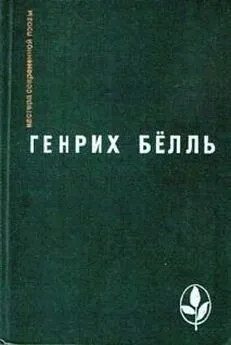
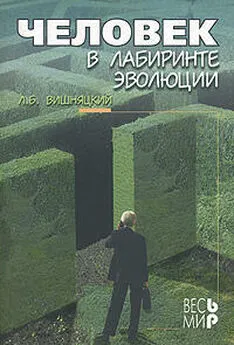
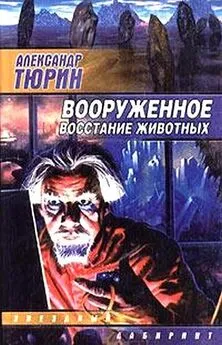
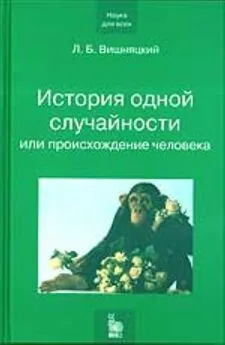
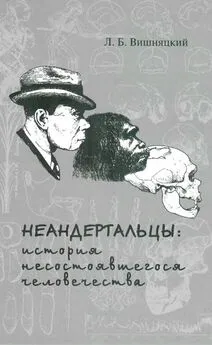

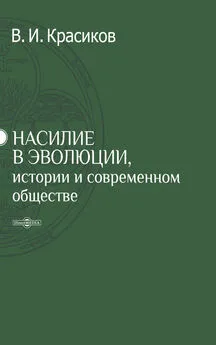
![Елена Рождественская - Феномен тахарруш как коллективное сексуальное насилие [научная статья]](/books/1069553/elena-rozhdestvenskaya-fenomen-taharrush-kak-kollekti.webp)